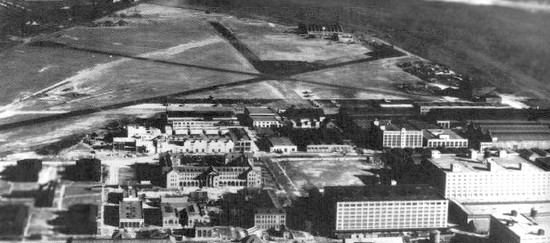The Naval Mustangs
With a surface of 69 millions square miles, the Pacific Ocean covers nearly a third of the Earth's surface. During World War II, military operations in the Pacific were confronted with the problem of range. This was particularly true of aerial operations. Mainland Japan was bombed on 18 April 1942 by Doolittle and his raiders, but that was a one-time effort of mostly psychological value. All of the 16 aircraft involved were lost, and 11 of the 80 raiders were either killed or captured. After that, no bombing raids were flown against the Japanese Home Islands until the second half of 1944 when B-29 long-range bombers were used from bases in China and later the Marianas islands. These raids were unescorted as no fighter had the range to escort the bombers all the way to Japan and back.
The lack of escorts for the B-29s became a growing concern. One of the solutions that was considered was to have fighter launched from aircraft carriers located closer to Japan join the bombing raid. Even so, no naval fighter had enough range. The only fighter which seemed suitable for this was the North American P-51 Mustang.
The Mustang had initially been designed as a fighter, and evolved into a dedicated long-range escort fighter by late 1943. It had never been intended for carrier-borne operations. Most naval aircraft are designed as such from the start for several reasons. The stress endured by airframes during catapult launches and arrested landings far exceeds that of normal, land-based operations. This requires modifications to the aircraft, notably reinforcement of its fuselage and undercarriage. Catapulting hooks are required for catapult launches, and a tailhook is needed to catch the arrester cable upon landing. The small size of an aircraft carrier deck also means that a low approach speed is preferable.
The environment in which naval aircraft evolve is also a problem. High salt and humidity levels greatly increase corrosion. Naval aircraft, just like ships, need to be treated to retard this as much as possible. Lastly, space is a rare commodity on an aircraft carrier, and folding wings are a very desirable feature of any naval aircraft.
The Mustang had none of these features but, due to urgency, it was decided to modify a Mustang and investigate its performance in carrier operations. The program was given the name “Project Seahorse”. An early-series P-51D was selected. P-51D-5-NA serial number 44-14017 was retained by North American Aviation in Dallas, Texas. (Contrarily to what has sometimes been reported, it was not given the Navy Bureau of Aeronautics serial number (BuNo) 57987, which was instead allocated to an earlier P-51, s/n 41-37426).
 |
| P-51D #44-14017, the naval Mustang prototype. Bob Elder is at the controls. Notice the catapult hook on the fuselage underside between the wings (Photo: US Navy) |
To enhance low speed handling, it was fitted with a fin fillet extension. This was a standard retrofit for early-series P-51D aircraft. The other modifications were specific to the new naval role of the aircraft. A tailhook was fitted. This required an extended keel line on which to fix the tailhook attachment point. A catapult hook was fitted on the fuselage centerline, just forward of the wing. To cope with hard carrier landings, the tires were replaced with special high-pressure ones. The main undercarriage shock absorbers received increased air pressure to reduce bouncing upon landing. The airframe was also reinforced in various points to withstand the extra stress.
Thus modified, 44-14017 was redesignated ETF-51D and sent to Mustin Field, near Philadelphia, for initial testing in September 1944. The pilot in charge of testing the ETF-51D was Navy Lieutenant Robert M. Elder. He was an experienced naval test pilot who had already conducted carrier-suitability trials with several types of aircraft.
 |
| An aerial view of Mustin Field in 1943. (Photo: US Navy) |
One of the runways at Mustin Field was specially modified in order to test the naval Mustang. Markings simulating the size of an aircraft carrier's deck were realized and arrester cables were installed, as well as a launch catapult.
|
Advertising
/ Banner Exchange |
|